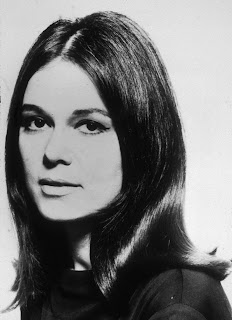This is no simple reform. It really is a
revolution. Sex and race because they are easy and visible differences have
been the primary ways of organizing human beings into superior and inferior
groups and into the cheap labour in which this system still depends. We are
talking about a society in which there will be no roles other than those chosen
or those earned. We are really talking about humanism.
Who is speaking? Gloria SteinemWhy was/is the speech important to society?
This speech was given at the height of the Women's Movement. Her speech addresses equality for women and other races in America. Why do you feel in is important or interesting?
This speech is important because of it was given during a critical time for women's rights. The world was a very different place back then and things are better now but still not great so its still relevant today.
What is the emotion, mood, tone, personality, feeling of the speech?
Uplifting, powerful and makes you think about the true issues of the world.
What is intonation, emphasis, what is loud, stressed, or soft. Where are there pauses...
This is hard because she speaks pretty much the same throughout the whole speak. But the most important words are, revolution, superior and inferior groups, chosen, earned and humanism. The last word is really the most important part of all of it.
What do you FEEL should be loud or soft, long pause or rushed?
"Sex and Race" should be loud, and "orangizing" and "superior and inferior groups", "Society" , " No Rules" and "Chosen or those Earned", lastly "humanism" should be loud. All of these words and lines in quotes make this whole speak important, so they need to be called out.
How does it make you feel?
It makes me feel empowered to go out and do something to help the injustices that are still happening today in the world.
How do imagine that the audience felt?
I can imagine that the audience felt the same pride I did to go out and support the women's rights movement. Some people probably didn't respond the same way but theres always those people. Could there be another interpretation of the speech?
Someone who doesn't believe in equal rights this speech probably seems like a load of poop. Write/find a short bio, of the person giving the speech.
Gloria Marie Steinem (born March 25, 1934) Gloria Steinem was born March 25, 1934, in Toledo, Ohio. She became a freelance writer after college and grew more and more engaged in the women's movement and feminism. She helped create both New York and Ms. magazines, helped form the National Women's Political Caucus, and is the author of many books and essays. A breast cancer survivor, Steinem celebrated her 80th birthday in 2014.









